Showing 151–160 of 1165 results
Cinema Through Rasa discusses the important works of the world cinema in the light of Rasa Siddhānta of the Indian classical aesthetics. Rasa Siddhānta was first mentioned in Bharata Muni’s Nāṭyaśāstra – the ancient treatise on dramaturgy. This book catalogues the major cinematic works in the light of Abhinavabhāratī – a tenth-century commentary on the Nāṭyaśāstra by the great Kashmiri Śaivite philosopher Abhinavagupta. Further, it outlines the links between puruṣārtha, the cultural value system of life pursuits in Indian tradition, and aesthetics while citing examples from the works of major directors such as Orson Welles, Luis Buñuel, Ingmar Bergman, Akira Kurosawa, Andrei Tarkovsky, Alfred Hitchcock, Carl Dreyer, Charlie Chaplin, Sergei Eisenstein, Robert Bresson and Satyajit Ray.
Using contemporary scholars’ interpretation of non-dualistic Kashmir Śaivism tradition, Cinema Through Rasa aims to serve as a tribute to Abhinavagupta’s genius, a commentary on important ideas such as rasa, nature of emotions, cinema and beauty along with a tryst with the masterpieces of the world cinema. The meaning of this book is summarized by this verse – na hi rasād r̥te kaścid arthaḥ pravartate – the medium of cinema, though modern, should be seen as resting in the power of rasa without which nothing makes any sense.
This book is a translation of the original Hindi book Abhinava Cinema, which was first published in 2016. Abhinava Cinema was lauded as innovative, path-breaking and a must-read for students of literature and cinema studies by scholars and critics.
Cinema Through Rasa discusses the important works of the world cinema in the light of Rasa Siddhānta of the Indian classical aesthetics. Rasa Siddhānta was first mentioned in Bharata Muni’s Nāṭyaśāstra – the ancient treatise on dramaturgy. This book catalogues the major cinematic works in the light of Abhinavabhāratī – a tenth-century commentary on the Nāṭyaśāstra by the great Kashmiri Śaivite philosopher Abhinavagupta. Further, it outlines the links between puruṣārtha, the cultural value system of life pursuits in Indian tradition, and aesthetics while citing examples from the works of major directors such as Orson Welles, Luis Buñuel, Ingmar Bergman, Akira Kurosawa, Andrei Tarkovsky, Alfred Hitchcock, Carl Dreyer, Charlie Chaplin, Sergei Eisenstein, Robert Bresson and Satyajit Ray.
Using contemporary scholars’ interpretation of non-dualistic Kashmir Śaivism tradition, Cinema Through Rasa aims to serve as a tribute to Abhinavagupta’s genius, a commentary on important ideas such as rasa, nature of emotions, cinema and beauty along with a tryst with the masterpieces of the world cinema. The meaning of this book is summarized by this verse – na hi rasād r̥te kaścid arthaḥ pravartate – the medium of cinema, though modern, should be seen as resting in the power of rasa without which nothing makes any sense.
This book is a translation of the original Hindi book Abhinava Cinema, which was first published in 2016. Abhinava Cinema was lauded as innovative, path-breaking and a must-read for students of literature and cinema studies by scholars and critics.

This book stresses the persistence of cultural diversity despite the homogenizing pressure of globalization, but argue that this diversity need not lead to conflict and may be our greatest resource. It contains essays on the idea of India and the American dream, as well as discussing broader questions raised by the meeting of different ways of knowing and being in an enigmatic world.
Our planet seems to be getting smaller and smaller. We now interact all the time with our once-distant neighbours around the globe. Yet our cultures remain almost as different as ever. Civilizations are the largest widely recognized units of this diversity. Over the centuries, each has evolved its own distinctive contributions to human life. But differences can be a source of conflict as well as mutual enrichment. Since the end of the Cold War, and even more in the aftermath of the events of September 11, 2001, the scenario of a clash of civilizations has struck many people as plausible.
Proposing the alternative scenario of a clasp of civilizations, these essays stress the persistence of cultural diversity despite the homogenizing pressure of globalization, but argue that this diversity need not lead to conflict and may be our greatest resource. Given the centrality of religion to many cultures, much depends on the replacement of outdated attitudes of religious exclusivism by a pluralism that embraces the other. A historical landmark in the emergence of religious pluralism was the Parliament of Religions that opened in Chicago on 11 September 1893. This book brings out its significance as a global cultural event, too far ahead of its time to be fully understood by its contemporaries.
The Parliament brought several notable exponents of Asian spirituality to America, including the charismatic Swami Vivekananda from India. Thus began the contact between these two countries which continues to deepen to this day. Written by an American living in India, the book contains essays on the idea of India and the American dream, as well as discussing broader questions raised by the meeting of different ways of knowing and being in an enigmatic world.
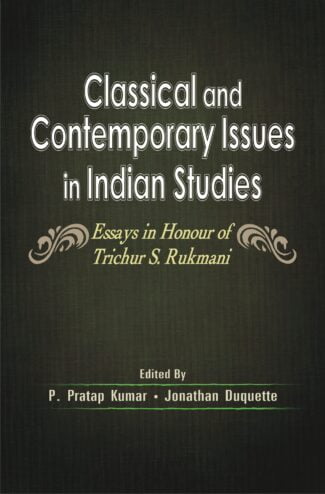
The book, a Festschrift volume in honour of Prof. Trichur S. Rukmani, focuses on diverse themes: Patanjali’s Yogasutras, Advaita Vedanta, Gaudiya Vaishnavism, Shaivism, grammar and epic literature. It also addresses issues of contemporary relevance relating broadly to non-violence, environment, gender and syncretism.
This book is a Festschrift volume in honour of Prof. Trichur S. Rukmani that reflects the plethora of issues which she studied in her scholastic life. It includes twenty-four essays by distinguished scholars on various classical and contemporary issues pertaining to Indian studies. While the volume discusses current research in the field of Yoga Prof. Rukmani’s primary research field it also invites further reflection on other areas of Indian thought which have attracted her attention in the course of her long and fruitful academic career.
The volume is divided thematically into six sections. The first two sections deal with the interpretation of the Yoga, Vedanta and Gaudiya-Vaishnava traditions, exploring issues of hermeneutics, methodology and philosophical analysis. The third section addresses issues of continuity within the Indian tradition and includes essays on tantric Shaivism, Mimamsa and the Bhagavad-Gita. The next two sections feature essays on the Sanskrit philosophical discourse, grammar, epic literature and renunciation in the Indian tradition. The last section of the volume takes up issues of contemporary relevance such as the insights from the Hindu tradition towards environmental ethics, the Svadhyaya movement and its dharmic ecology, non-violence, gender, cultural identity as well as syncretism.
The volume, including essays as diverse as Prof. Trichur S. Rukmani’s own scholarly interests, will certainly benefit all scholars and students of Indology, especially those concerned with the religious and philosophical traditions of India.
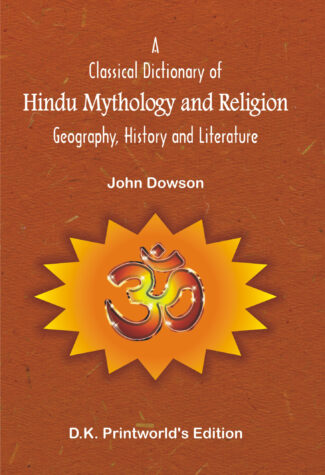
The Classical Dictionary encompassing the vast Hindu pantheon presents episodes, legends, literary works and geographical locales associated with Hindu religious beliefs. It is now offered in a fresh, state-of-the-art typeset incorporating standard diacritical marks.
Professor Dowsons Classical Dictionary of Hindu Mythology and Religion is now offered not only in a fresh format, but in a fresh, state-of-the-art typeset as well. Incorporated here, in addition, are standard, meticulously worked-out diacritical marks as rather mechanical aids in comprehending the transliteration of Indic sounds, more specially of the Sanskrit alphabet, into English. In its alphabetically arranged articles of varying lengths, the Dictionary tries to encompass the vast Hindu pantheon, in all its complexity and symbolic/metaphorical representations. Covering, thus, a whole mix of mythological characters: gods and demons, prajapatis and raksasas, it also presents explanatory accounts of important events/episodes, legends, literary works, and even geographical locales, associated with Hindu myths and religious beliefs. Acclaimed worldwide ever since its first appearance, the Dictionary sustains its essentially undiminishing appeal to the scholars and general readers seeking to discover for themselves the awesome world of Hindu mythology and the grand cosmogonic design it unveils.
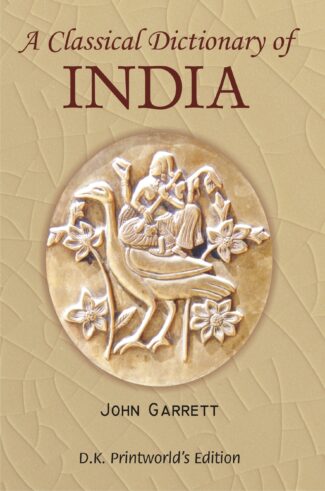
The work, now in a fresh format, is a storehouse of knowledge on Indian Mythology/antiquities Hindu deities and concepts, Buddhist theological terms, etc. It refers to authentic writings and their vast sources.
With lucidly-written accounts, of varying lengths, this Dictionary attempts to unfold all that anyone would want to know about Vedic/post-Vedic/classical India: its religions, mythology, pantheonic/legendary personages, schools of philosophy, sacred and secular texts, arts, antiquities, sciences, geography, rituals, customs, and the like; and, these besides, English equivalents/definitions of myriad Indic, largely Sanskrit, terms. For its sheer authenticity, the late John Garrett had drawn on a whole line-up of eminent Orientalists: from Max Muller to Monier Williams, form H.H. Wilson to John Muir. No wonder, the author, himself a celebrated scholar, invested over two-decade-long effort to compile this reliable, neatly exhaustive Classical Dictionary. For well over a hundred years, Garretts work has been recognized as a classic in its own right. Now reaching it out afresh to the present-day international scholarship, this edition has been recomposed in its entirely. And its lay-out as well has been improved in certain user-friendly ways. Also intoduced here, for the first time, are standard diacritical marks to help readers comprehend the transliteration of Indic sounds. As ever, it remains an unfailing companion of researchers, scholars and general readers, involved with Indological studies.

The book vividly presents, analyses and critiques the varied facets of Indian aesthetics, especially the theory and technique of classical Indian dance, while doing a penetrating study of interrelationship that dancing has with literature, sculpture and music. In doing so, the book surveys and analyses the contribution of all great Sanskrit authors, theoreticians, playwrights of ancient and classical India along with the works many Bhāṣā scholars of arts, aesthetics and literature.
This volume is the result of many years of painstaking research in a field, which had been neglected by art historians, and thus presenting an idealistic view of the whole tradition of Indian art and aesthetics. This definitive work on the inherent interrelationship of the Indian arts is a path-breaking endeavour, treading into a domain which no one had explored. For that to happen, the author has delved deep into enormous mass of literature on the subject and has also surveyed the portrayal of dance figures in ancient temples. With Dr Kapila Vatsyayan’s profound knowledge of various dance forms as a performing artist of her own standing and having studied the sculptures and artefacts minutely, the book emerges so scholarly emanating the wisdom and know-how of a persona, endowed with the unique combination of a researcher, an art historian and an aesthetician par excellence.
The book vividly presents, analyses and critiques the varied facets of Indian aesthetics, especially the theory and technique of classical Indian dance, while doing a penetrating study of interrelationship that dancing has with literature, sculpture and music. In doing so, it surveys and analyses the contribution of great Sanskrit authors, theoreticians, playwrights of ancient and classical India such as Bharata, Bhāsa, Kālidāsa, Śūdraka, Bhavabhūti, Abhinavagupta, Jayadeva and many more along with numerous Bhāṣā scholars of arts, aesthetics and literature, covering each and every nook and corner of the Indian subcontinent.
This highly scholarly work should invoke keen enthusiasm among Sanskritists, art historians, dancers and students of varied art forms alike, and should pave the way for ongoing researches on all the topics covered within its scope.
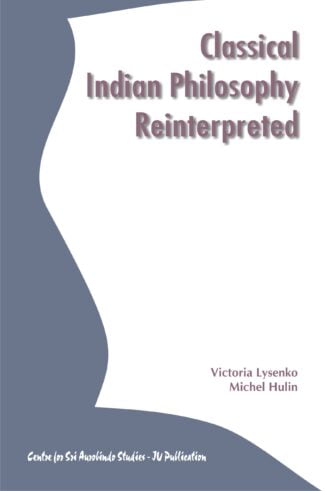
The book reinterprets some basic concepts of paramanu (atom), samanya (universal), ahamkara (the ego-principle) and karma as understood by the classical Indian philosophical systems the Nyaya-Vaishesikas, Samkhyas and the Buddhists. The articles explore the study of Aristotle’s Mean (Mesotes) and Buddha’s Middle Path (Majjhima Patipada).
Classical Indian Philosophy Reinterpreted consists of articles written by Victoria Lysenko and Michel Hulin two distinguished scholars of international repute on some basic concepts of classical Indian philosophy such as paramanu (atoms), samanya (universal), ahamkara (ego principle), and karma. These essays address important debates and issues that have arisen centering around Indian philosophical texts. In an essay an attempt has been made to resolve the apparent contradiction between the psychological and cosmic aspects of tattva in the scheme of the Samkhya dualism. One of the major contributions of this volume consists in situating Indian concepts from a comparative perspective as well. A comparative account of Aristotle’s Means (Mesotes) and Buddha’s Middle path (Majjihima Patipada) is illuminating. The notion of Christian reincarnation has also been compared and contrasted with the Indian concept of karma. The karmic principle has been interpreted as a mechanism for retribution and the link between karmic causality and the role of Ayurveda, the classical Indian science of medicine, has been explored and analysed. These essays share a common perspective in looking at philosophy from within the cultural traditions in which it grows. This book will be useful to researchers, academicians and other interested persons. Even a reader who is not familiar with classical Indian philosophical texts can form some idea about the rigour and thoroughness of Indian philosophical approach.

This book brings into focus the problems associated with conveying the central concepts and categories relating to some key areas of Indian classical thought through the well-established lexicons available in English, the language of power. It covers thus Epistemology, Ontology, Aesthetics, Moral Philosophy, Philosophy of Language, Religion and Logic, Political Theory, History, and Culture Theory from India and abroad.
This book is based on the proceedings of a Workshop held in 2011 on Rendering of the Categories of Classical Indian Thought in the English Language: Perspectives and Problems.
Although scientific texts appear to have successfully solved the problem by standardizing technical terms for all languages of instruction and communication, the problem of translation becomes acute when dealing with vocabularies of long standing belonging to ancient cultures, as is the case in India.
More urgently, we know that the thought worlds of ancient and medieval India are still very much alive and with us. Thus to even begin to understand contemporary India and its dilemmas, it is essential to come to grips with the foundational concerns, wisdom and follies of a civilization that has refused to die. What we find, however, is that when it comes to the understanding of our own thought traditions, their rendering into the English language in the colonial (and post-colonial) period, has only served to obscure the great cultural divide between the history of Western thought and our own.
The workshop thus aimed at bringing into focus the problems associated with conveying the central concepts and categories relating to some key areas of Indian classical thought through the well-established lexicons available in English, the language of power.
The multidisciplinary gathering included not only philosophers from the fields of Epistemology, Ontology, Aesthetics, Moral Philosophy, Philosophy of Language, Religion and Logic, but also specialists in the fields of Political Theory, History, and Culture Theory from India and abroad.
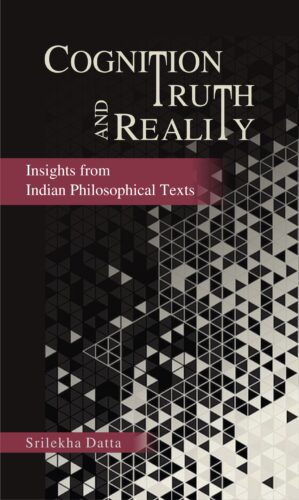
The book addresses various fundamental topics of philosophy in the area of epistemology and metaphysics like doubt, memory, perception, truth and validity, the self, consciousness and universals; and these are explored from the perspective of Indian philosophy.
“This book contains a number of essays on various fundamental topics of philosophy in the area of epistemology and metaphysics. Topics like doubt, memory, perception, truth and validity, the self, consciousness and universals are explored from the perspective of Indian philosophy. The discussion here is based on Indian philosophical texts which bear the evidence of analytical mind of the Indian thinkers and their critical approach to the subject. The author has suggested some new interpretation in some cases and offered some alternative solution to certain problems. These essays are the results of the author’s intensive study of the subject. This book will be useful for students and researchers. A survey of the opinions of different schools of philosophy on different topics can be found here and the scope for further research on those areas has also been shown.”
| There are no products |